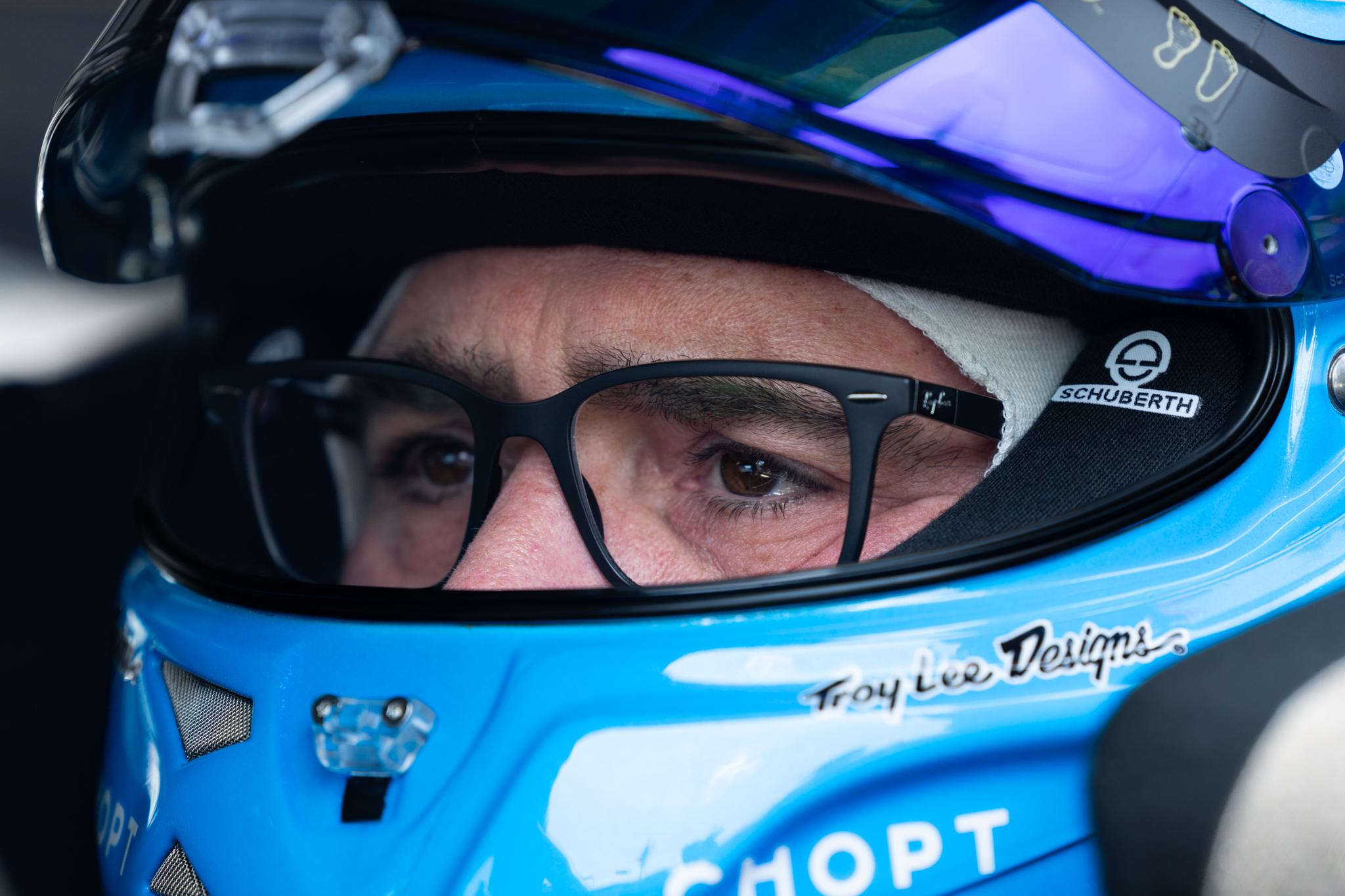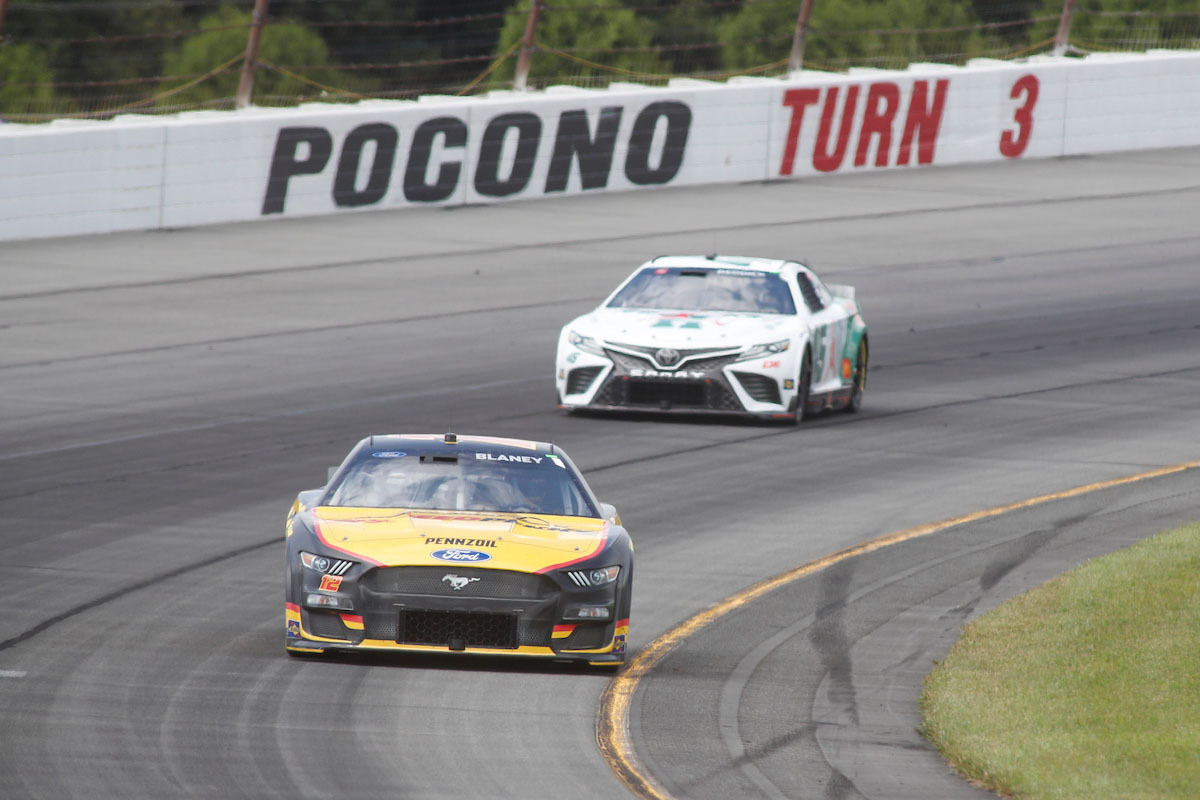Why Do NASCAR Helmets Have a Hose? Explaining Ventilation and Communication Functions


NASCAR races are intense, high-speed events where drivers confront extreme conditions, particularly within the cockpit of their vehicles. The temperature inside a race car can soar, often exceeding 130 degrees Fahrenheit due to the heat produced by the engine and the surrounding environment. This can create a challenging environment for the drivers which requires special equipment to ensure their safety and comfort. NASCAR helmets are equipped with a hose that plays a vital role in managing these stressful conditions.
The hose attached to a NASCAR helmet is a critical component of the driver’s cooling system. It is designed to pump air into the helmet, which provides both ventilation and a degree of cooling. By introducing a stream of cooler air, the system helps to regulate the driver’s body temperature and prevent the risk of heat exhaustion. Safety is of the utmost importance in NASCAR, and this technology is one of many advancements that have been adopted over the years to protect the wellbeing of drivers during races.
The air pumped through the hose is also beneficial for the helmet’s visor, reducing the likelihood of fogging and maintaining clear visibility. With a focus on maintaining performance under duress, NASCAR continues to enhance driver safety gear by integrating advanced technology and equipment. The hose is a relatively simple yet effective answer to the sweltering conditions faced by drivers, ensuring they can concentrate on racing with minimal heat-related distractions.
Table of Contents
Importance of Safety in NASCAR
NASCAR has always placed a high priority on driver safety, implementing numerous technologies and standards to minimize risk during races.
Evolution of Safety Standards
Safety in NASCAR has seen significant advancements, especially since the turn of the century. Following the death of Dale Earnhardt Sr. in the 2001 Daytona 500, NASCAR intensified its focus on safety. As a result, the use of the HANS (Head and Neck Support) device became mandatory. It is designed to secure the helmet to the driver’s body, preventing the head from sudden movements during impacts. Fire-retardant materials are also now a standard in driver suits, gloves, and shoes to protect against fire-related injuries.
Current Safety Technologies
Today’s NASCAR safety measures encompass a range of devices and materials. Helmets, essential for driver protection, must meet the standards set by organizations such as the Snell Memorial Foundation. They are designed to absorb impact energy and prevent penetration by debris. Seats are also constructed to provide maximum support and reduce injury risk during a crash. SFI Foundation certifications are another aspect of NASCAR’s commitment to safety, ensuring that equipment meets rigorous safety criteria. These efforts demonstrate NASCAR’s dedication to maintaining the well-being of its drivers through advanced safety features and ongoing technology development.
NASCAR Helmet Design
NASCAR helmets are a product of advanced material science and engineering, designed to provide maximum protection and comfort for drivers in high-speed, high-temperature racing conditions.
Material and Construction
The outer shell of a NASCAR helmet is typically made from composite materials such as carbon fiber and Kevlar. These materials are chosen for their high strength-to-weight ratio and durability. Inside the helmet, a layer of Nomex, a fire-retardant fabric, adds an additional level of safety in the event of a fire.
- Carbon Fiber: Provides a lightweight yet strong structure.
- Kevlar: Enhances the helmet’s ability to resist penetration.
- Nomex: Acts as a fire-resistant barrier to protect the driver.
Impact Resistance and Absorption
The design of the helmet focuses on impact resistance to protect the driver during collisions. A combination of the hard outer shell and interior padding materials absorbs the force of impacts. The padding is also made from advanced materials that compress and distribute the shock away from the driver’s head.
- Hard Outer Shell: Distributes impact force.
- Interior Padding: Absorbs shock and protects against concussions.
Fire Retardant Properties
NASCAR helmets must adhere to strict safety standards set by bodies such as the Safety Foundation, Inc. (SFI). Part of these standards ensures that helmets have fire-retardant properties. The use of Nomex in the lining is critical, as this material self-extinguishes and provides a vital layer of protection against the intense heat and potential flames encountered in motorsport.
- SFI Standards: Helmets meet specific safety criteria.
- Fire-Retardant Materials: Including Nomex to reduce the risk of burns.
Helmet Ventilation and Cooling Systems
NASCAR drivers combat extreme temperatures by utilizing specialized helmet cooling technology during races.
Purpose of the Hose
The hose attached to NASCAR helmets serves a critical function: providing cool air to the driver. In the confines of a race car cockpit that can exceed 130 degrees, maintaining a cool head is essential not only for comfort but also for preventing heat exhaustion and maintaining cognitive function while driving at high speeds.
Ventilation Technology
A sophisticated ventilation system is at the core of the helmet’s cooling capabilities. This system includes:
- Air Hoses: These direct externally sourced cool air into the helmet.
- Ventilation Mechanisms: They distribute the cool air evenly within the helmet to various zones such as the top of the head and the face area.
By using these technologies, helmets ensure that drivers receive a continuous flow of air, which helps to moderate their body temperature and manage the intense heat generated during racing.
NASCAR Safety Equipment
NASCAR takes driver safety seriously, utilizing specialized equipment to ensure the well-being of drivers during high-speed races.
Driver Protective Gear
Drivers are equipped with fire-retardant suits, gloves, and shoes, all designed to offer protection against fires. Helmets are a crucial aspect of a driver’s gear, often including hoses that pump cool air into the helmet to reduce heat stress and improve comfort. This helmet connectivity ensures clear communication through radios as well, while visors help reduce sun glare, enhancing visibility.
- Helmets: Linked to cooling systems, radios; may have glare-reducing visors
- Suits and Accessories: Constructed for flame resistance, includes suits, gloves, and shoes
Vehicle Safety Innovations
NASCAR vehicles boast numerous safety features. They are fitted with harnesses that keep drivers secure in their seats, safety glass in windows to prevent shattering upon impact, and fire suits within the car for added protection. Additionally, cars are equipped with energy-absorbing walls, known as SAFER barriers, to mitigate the force of crashes.
- Harnesses: Secure the driver in place
- Safety Glass: Prevents shattering on impact
- SAFER Barriers: Walls that absorb crash impact, reducing injury risk
Key Figures and Teams
NASCAR teams and drivers have adopted specialized helmets equipped with air hoses to regulate temperature during high-intensity races. Kyle Busch of Joe Gibbs Racing and his Toyota team utilize a helmet with a hose attachment that blows air on the driver’s head and face. Similarly, Chevrolet drivers like Chase Elliott and Kyle Larson from Hendrick Motorsports, as well as Alex Bowman, benefit from these cooling systems to maintain focus during lengthy races.
Stewart-Haas Racing, featuring Kevin Harvick and Aric Almirola, employs similar technology in their Ford vehicles. The air hose connector, essential for reducing carbon monoxide levels and cooling, is a small but significant element of their racing gear.
| Driver | Team | Manufacturer |
|---|---|---|
| Kyle Busch | Joe Gibbs Racing | Toyota |
| Chase Elliott | Hendrick Motorsports | Chevrolet |
| Kevin Harvick | Stewart-Haas Racing | Ford |
| Aric Almirola | Stewart-Haas Racing | Ford |
| Chris Buescher | Roush Fenway Racing | Ford |
Teams such as Trackhouse Racing Team, with drivers like Daniel Suarez, and Richard Childress Racing, represented by Austin Dillon, have also integrated these advanced helmet cooling systems in response to the high temperatures experienced on tracks. The hose feature is particularly important for Martin Truex Jr. and Denny Hamlin, ensuring their endurance through races where cockpit temperatures are exceedingly high.
In the sphere of smaller teams, implementation varies but the same principles apply. Teams like JTG Daugherty Racing with Ricky Stenhouse Jr. and Spire Motorsports‘ Corey LaJoie, have to manage the balance between performance and driver safety, with these cooling systems being an integral component of their racing strategy.
23XI Racing and drivers under the smaller Rick Ware Racing, including Michael McDowell, might also invest in these technologies to ensure their racers, like Kyle Busch‘s brother, Kurt Busch, stay cool under the stress and heat of competition. With temperatures inside the cockpits soaring, maintaining a competitive edge requires attention to every detail, which includes the air hose connectivity of their NASCAR helmets.










